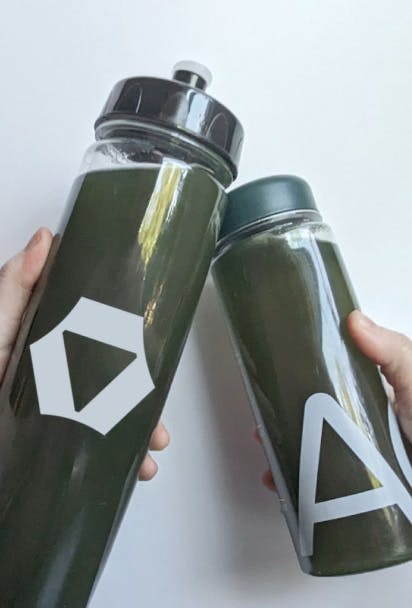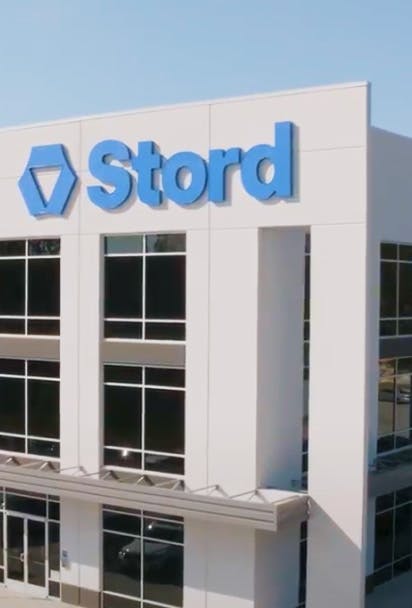September 17, 2020
The 27th Annual Global Retailing Conference was hosted virtually by Goldman Sachs on September 9-10th, 2020 and attended by over 200 individuals. Dozens of retailer executives participated in panels that made up the virtual conference, including leaders from Macy’s Inc., Walmart Inc., Target Corporation, Dollar General Corporation and more.
Stord co-founder and CEO Sean Henry joined a panel with Stackline CEO Michael Lagoni, GreyOrange CEO Samay Kohli and Trove CEO Andy Reuben to discuss how they are helping brands shape their e-commerce strategy and trends they believe will drive e-commerce in the coming years. The panel was hosted by Mike Reilly on Goldman Sachs’s Growth Equity investing team.
Below is an excerpt from the panel discussion:
Reilly: How have you seen COVID-19 impact how brands are addressing omnichannel distribution and how are distribution networks like Stord helping brands to make that transition?
Henry: At the onset of everything we saw two different responses. Brands were saying how do I build more redundancy in my distribution network, because I have one of two problems: I’m either closing my retail stores and I have a lot of inventory coming in that I need to do something with now that I’m selling less, or I’ve sold all of my product off of shelves, and now need to increase my production and my inventory availability to fill all these orders. As the initial reaction subsided, we saw a hard push from large-scale B2B brands, on the retail side in particular, into omnichannel operations and increasing their fulfillment capability relative to their B2B distribution.
The reason Stord is really positioned to help those customers is because it’s an incredible challenge to build and service a logistics network that can handle B2B, D2C, wholesale and other distribution channels all at the same time, and do it in an integrated fashion where you have visibility into the data, into what’s happening, so you can make the right decisions and it’s not siloed within these different business units.
What we saw at Stord was a lot of large-scale CPGs who for the first time were setting up an e-commerce store or signing a contract to fulfill products with Amazon for the first time. What our network was able to help them do, because we’re essentially a platform for both our network and theirs, was seamlessly expand. Say you have these 20 different warehouses across the U.S. holding bulk B2B inventory and redistributing to your retail stores every day or to your end B2B customers -- how can we quickly inject some of that inventory into our fulfillment centers in our network to take your product, maintain that same integration back to your ERP system and start fulfilling these orders that are now coming through these different channels?
The value of Stord is when you have both the network itself, and it’s integrated through one software platform, it gives the company the agility to make those decisions quickly, where typically those buying cycles and integration cycles to fulfillment partners or large scale carriers could be 6-8 months of lead time if you’re trying to adjust your network right now. Those large scale parcel companies just can’t take those adjustments right now.
It was an acceleration into omnichannel for a lot of B2B brands who thought it was more of a 2022 or 2025 initiative; it was pulled in that direction in the short term. We’ve seen our volume go from thousands of B2B orders every single week, which are primarily truckloads going in and out of distribution centers into retail stores, to tens of thousands of parcel orders every single day on behalf of our customers just over the last few months. It’s been an interesting shift to watch, and we’ve built new components of the network as we’ve served those customers.
Reilly: As you think about how brands will compete with Amazon’s extensive supply chain network, what third-party technology solutions do you think are necessary for brands to compete?
Henry: What Amazon does really well, that we concentrate on here at Stord, is treating your software infrastructure for your logistics, and your actual logistics network, cohesively and in tandem. A lot of companies segment these buying decisions across different departments and treat them as internal systems versus external logistics providers. That’s where our goal at Stord steps in to combine both software and logistics through the platform approach of providing the software infrastructure and onboarding our own network, as well as allowing customers to bring their own networks to our platform. So with this you can have a fully integrated experience, and ultimately in that order to ship lifecycle, from the time it leaves your ERP or the shopping cart you’re doing everything from a logic-driven perspective of checking your inventory balances across each facility, checking your time and cost to ship from each facility based on that inventory availability, segmenting in the demand planning and understanding where you need to replenish based on those user patterns.
While all of those activities occur today at large-scale brands, it’s very uncommon that they’re fully integrated from start to finish and that they’re cohesive, versus different manual planning steps and different automation in other segments where it’s been more possible. One of the key trends is ultimately considering both the software infrastructure for your logistics network and what your operating system looks like, whether it’s a partner like Stord or a culmination of different software tools, and doing that in tandem with all of your different logistics providers, both internal -- your facilities, your fulfillment centers -- and external, instead of viewing those as different buying decisions each time.
When I talk about omnichannel acceleration and companies moving more into fulfillment, I think that one risk that companies run is setting up these new supply chains, ecommerce offerings, and omnichannel offerings for demand shifts as brand new supply chains that aren’t too connected to their existing infrastructure, when there’s a lot you can leverage from your existing infrastructure -- your plants, your existing distribution centers, your third party logistics providers. It just takes visibility and connectivity across your organization.
One of our core value propositions, and what I think brands should really strive for, is something that Amazon does really well, connecting both the data of what’s happening with your network to what’s optimal -- where should it ship from, where should inventory be placed, where warehouses should be, to the actual physical execution of the logistics itself. Typically those are different systems -- it’s an ERP, an order management system, disconnected from a supply chain design tool, disconnected from all the different logistics infrastructure you’re building in your network. Connecting those categories is integral to ride the wave that’s happening right now, and to do so successfully moving forward into the future.




